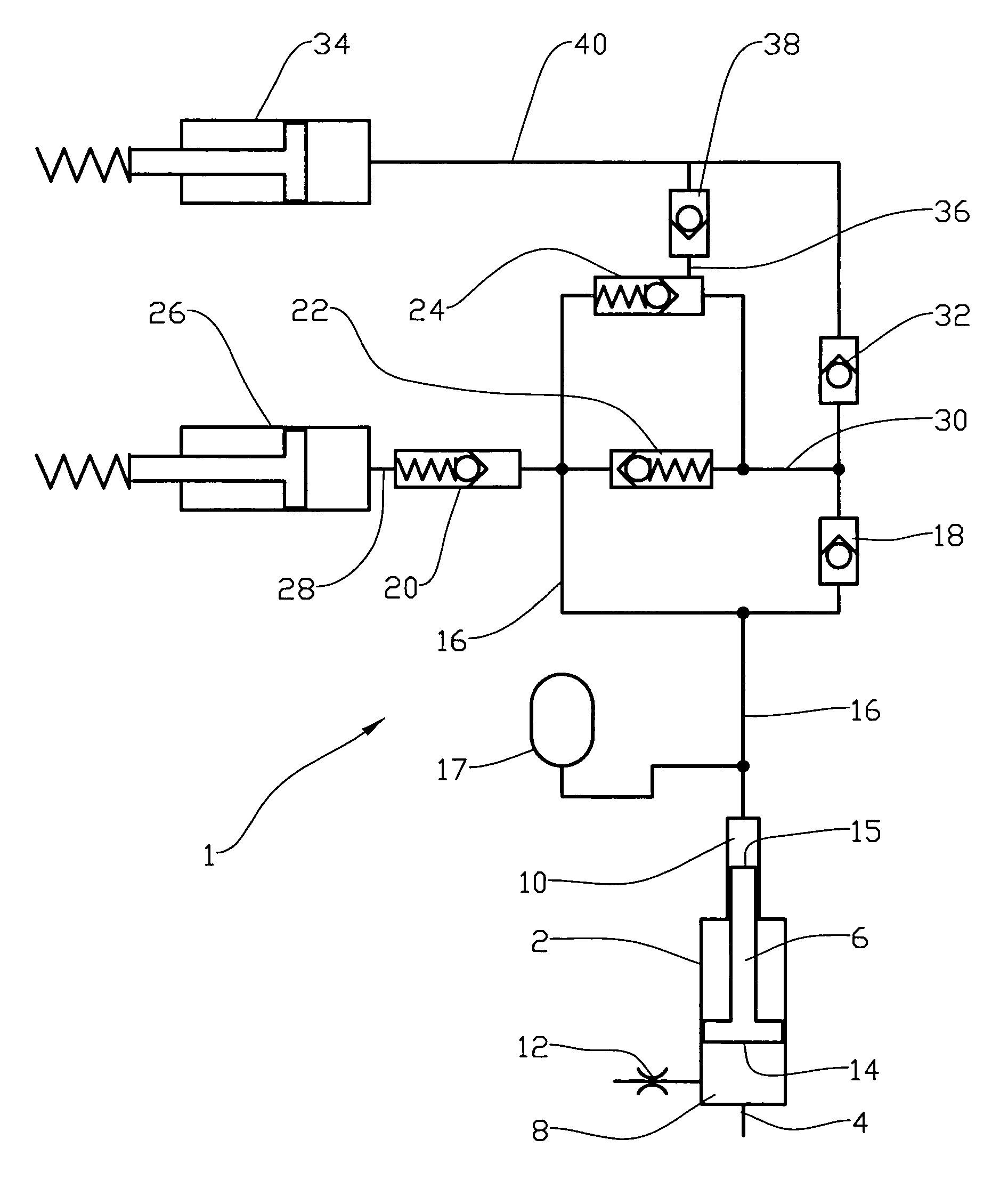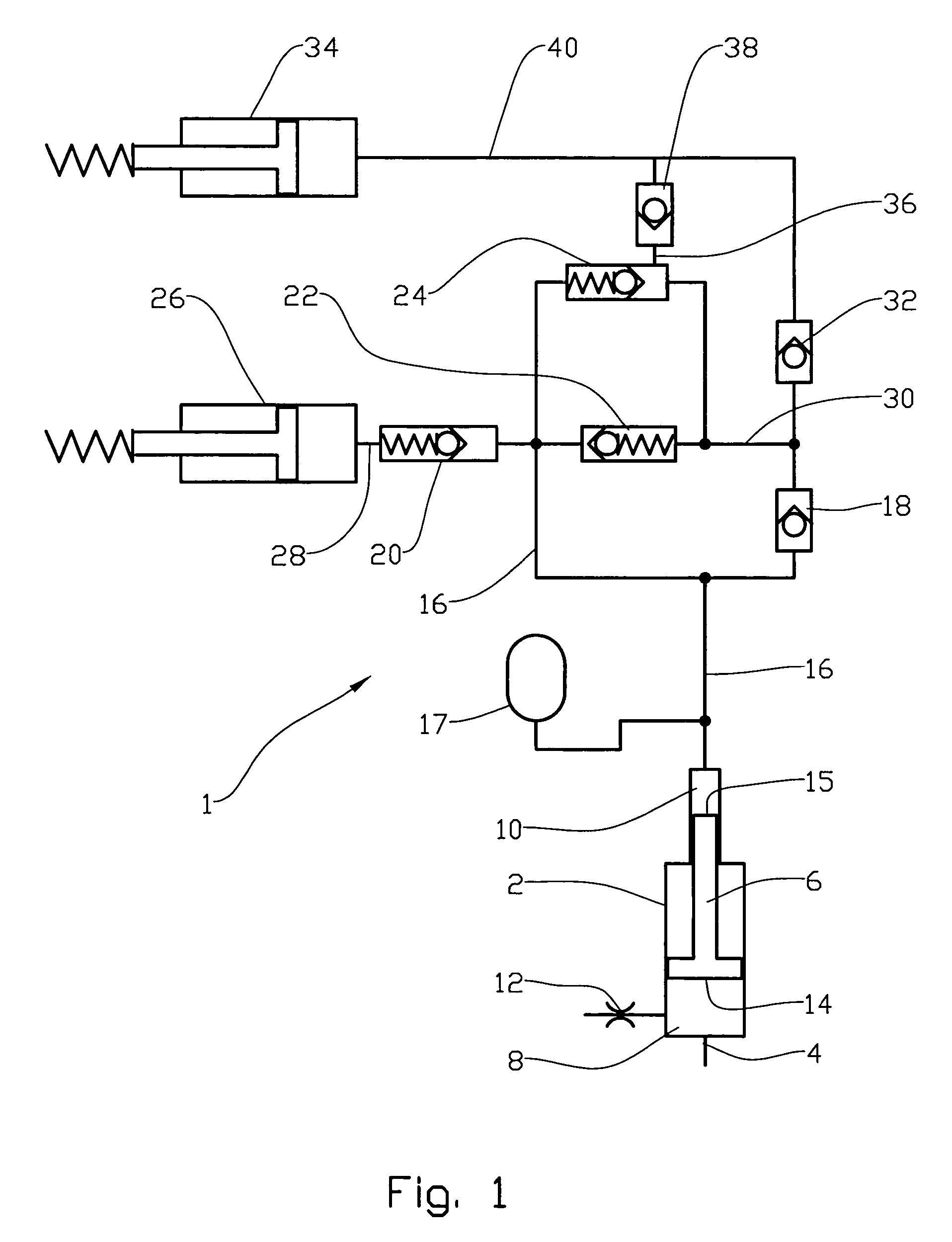Method and device for pressure controlled sequential operation
a sequential operation and pressure control technology, applied in the direction of fluid removal, servomotor components, borehole/well accessories, etc., can solve the problems of reducing the applicability of the valve, electrical conductors are often exposed to damage, and working fluid is unsuitable for the use of the valve of this type, so as to achieve the effect of greatly improving the reliability of the valv
- Summary
- Abstract
- Description
- Claims
- Application Information
AI Technical Summary
Benefits of technology
Problems solved by technology
Method used
Image
Examples
Embodiment Construction
[0023]In FIG. 1, reference number 1 denotes a hydraulic sequential control system for a downhole tool (not shown).
[0024]Working fluid may flow from e.g. coiled tubing (not shown) and through an inlet port 4 into a booster 2. A piston 6 in the booster 2 sealingly separates a working fluid chamber 8 and hydraulic fluid chamber 10 of the booster 2.
[0025]A throttle valve 12 communicates with the working fluid chamber 8 and is arranged to throttle an outlet from the working fluid chamber 8.
[0026]Preferably the piston 6 is designed so that the working fluid acts on a piston area 14, which is larger than a piston area 15 acting on the hydraulic fluid.
[0027]From the hydraulic fluid chamber 10, hydraulic fluid flows via a first distribution line 16 to an accumulator 17, the closing port of a first check valve 18, a first pressure relief valve 20, a second pressure relief valve 22 and the inlet port of a controlled pilot valve 24. The first pressure relief valve 20, which is arranged to open ...
PUM
 Login to View More
Login to View More Abstract
Description
Claims
Application Information
 Login to View More
Login to View More - R&D
- Intellectual Property
- Life Sciences
- Materials
- Tech Scout
- Unparalleled Data Quality
- Higher Quality Content
- 60% Fewer Hallucinations
Browse by: Latest US Patents, China's latest patents, Technical Efficacy Thesaurus, Application Domain, Technology Topic, Popular Technical Reports.
© 2025 PatSnap. All rights reserved.Legal|Privacy policy|Modern Slavery Act Transparency Statement|Sitemap|About US| Contact US: help@patsnap.com


